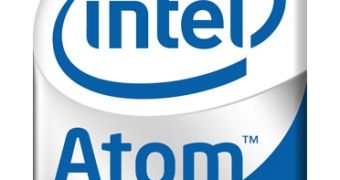Intel's low-power, low-budget 45-nanometer CPU for mobile Internet devices is expected to run short in supplies during the third quarter of the year because of the increased demand on the OEM market. According to Intel, the company is struggling to deliver as many units as possible in due time, but the initial estimations seem to be outpaced.
"We are working closely with our customers to meet their needs", said Intel spokesman Bill Calder. "We're just seeing better-than-anticipated demand", he continued. Intel refused to detail on the upcoming shortage, but the news has been confirmed by manufacturing partners that rely on the chip for their upcoming generations of products.
For instance, Asustek's CEO Jerry Shen claimed that Intel would not be able to deliver the necessary units until the third quarter of the year and also said that his company was looking for solutions to eliminate shortages in the Eee PC 900 series.
"Unlike our competitors, we use both Intel Atom processors and Intel Celeron M processors, so this will give us a stronger advantage in guaranteeing shipments", added Shen. However, other "competitors" such as MSI and Dell will be unable to deliver their promised units on time, given the fact that their designs are exclusively built around the Atom chip.
Intel's troubles in ramping up production might be a blessing for its sharpest rival on the low-energy CPU market, VIA. The latter is preparing to unveil its next generation of 64-bit processors with out-of-order processing capabilities, called the Isaiah/CN. Recent benchmarks show that Isaiah is currently the most powerful low-energy chip on the market and keels down both the previous VIA C7-M iteration and Intel's Atom chip.
The short supply in Atom chips is likely to be triggered by the fact that Intel's 45-nanometer fabs are also manufacturing its Penryn processors (that are also in high demand), while other production facilities are engaged in the production of the first 45-nanometer Nehalem parts.

 14 DAY TRIAL //
14 DAY TRIAL //